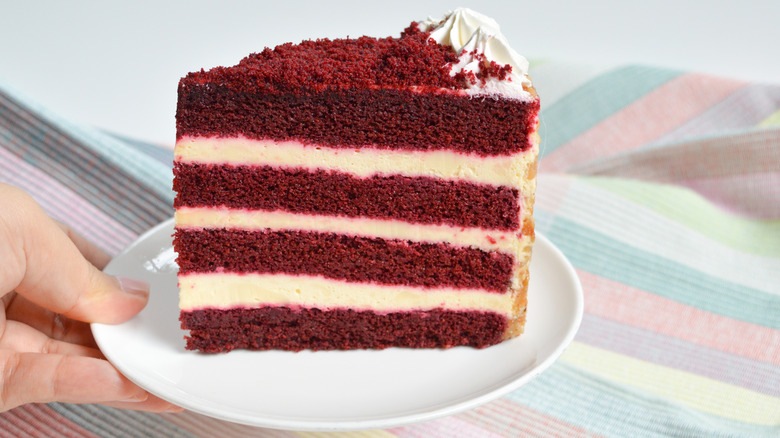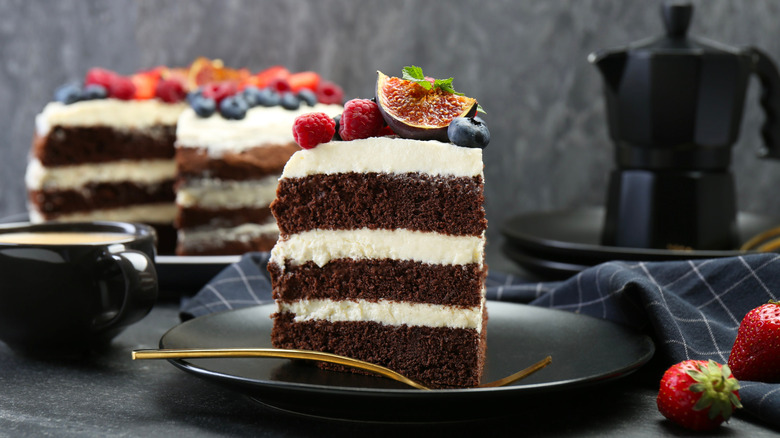The Unconventional Cake Cutting Technique You Should Be Using For Less Crumbs
While flavor is the cornerstone of any good cake, presentation can really elevate your dessert-eating experience — especially when serving a crowd of hungry friends and family. But even the most perfectly frosted cake loses its elegance if the slices come out messy, uneven, or full of crumb trails that smear into the icing. Luckily, there's a simple trick to avoid this: slicing your cake horizontally instead of vertically.
That's right — rather than the usual top-down cut, flip your knife upside down (with the tip pointing towards the floor) and gently slide it through the side of your cake, moving inward until you reach the center. This sideways approach glides cleanly through the layers, keeping crumbs from smudging into your delicately piped frosting or littering your serving platter.
For the most even slices, mark the center point of the cake beforehand to use as a visual guide for slicing. While you could use this technique on nearly any cake, it's especially helpful for those with contrasting colors in the sponge and frosting — where every smudge shows.
Other tricks for the perfect cake slice
After you've mastered the horizontal slicing method, there are a few other things to consider to avoid a smushed, crumbly mess. First, resist the urge to cut the cake fresh from the oven or even at room temperature. The warmer the cake is, the more delicate the crumb and frosting, which could lead to smudges and frosting sticking on the knife. For cleaner cuts, chill your cake in the fridge for about 30 minutes to set the frosting and sponge. This is one of the cake tips Ina Garten swears by.
The type of knife you use could also determine how your slices come out. If you're using the horizontal cutting method, a sharp, straight-edge chef's knife works great, as there's no risk of squishing the cake down. If you prefer the classic top-to-bottom method, however, the best knife to use for cutting cake is a serrated knife – the kind you'd use for slicing bread or tomatoes — which saws gently through the cake without exerting too much pressure and smashing it. For an even more precise cake cutting approach, break out the dental floss and slide it down the cake.
Another rule of thumb: While your cake should be cool, your knife should be warm. Running it under hot water before drying and slicing reduces friction and sticking. Just be sure to wipe your knife off in between slices to ensure no leftover crumbs get carried onto your next clean slice.


